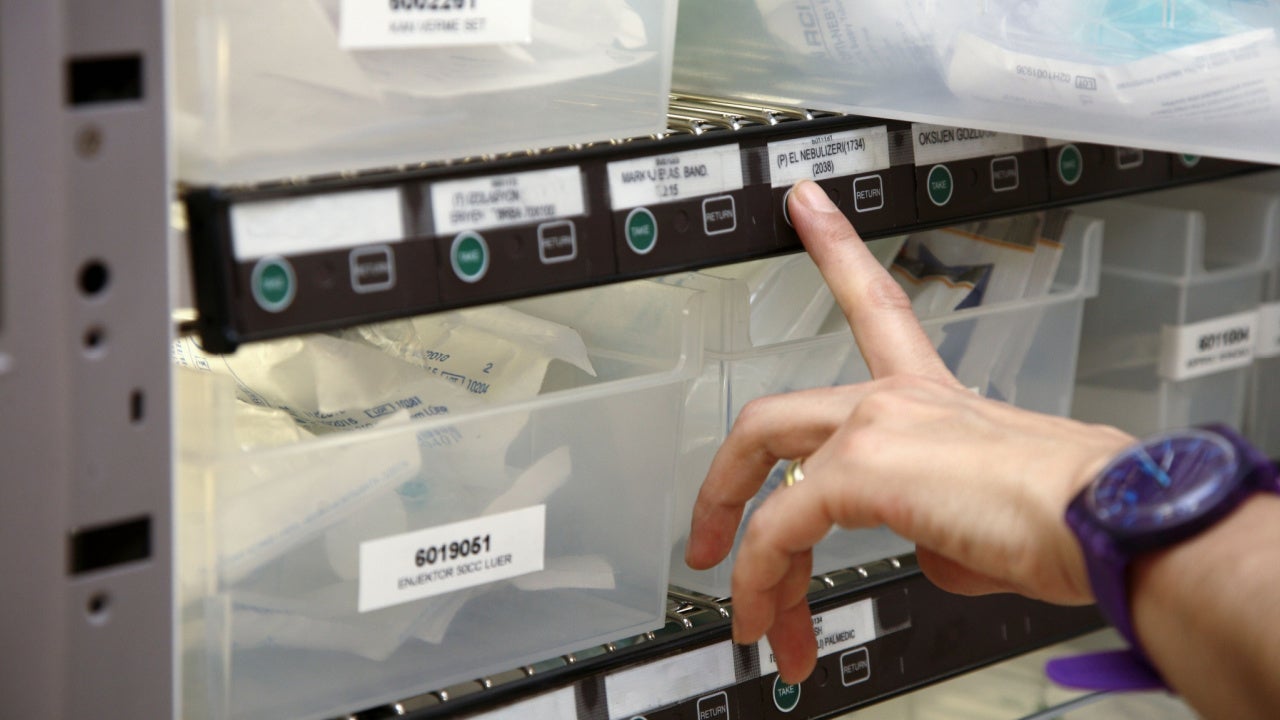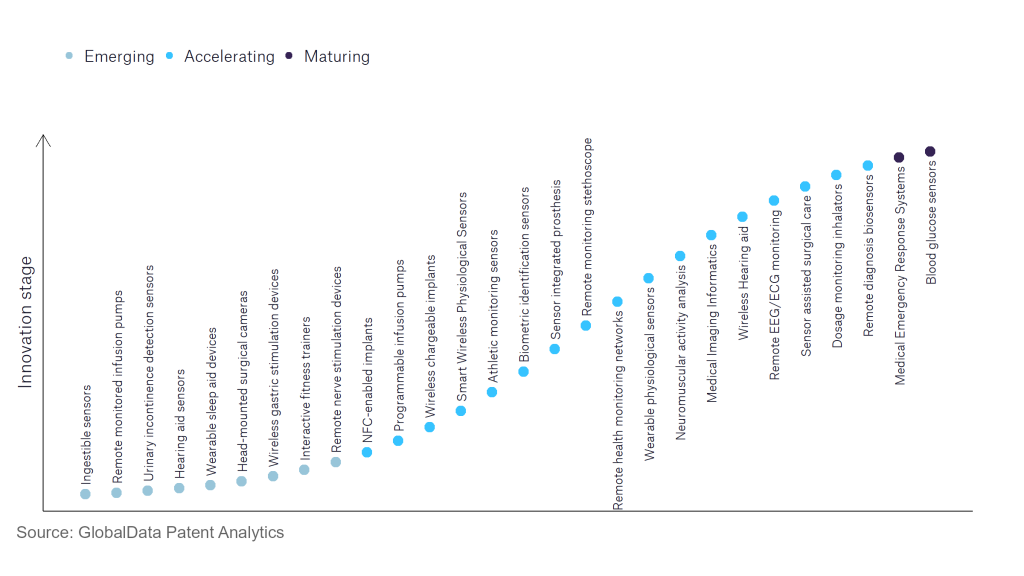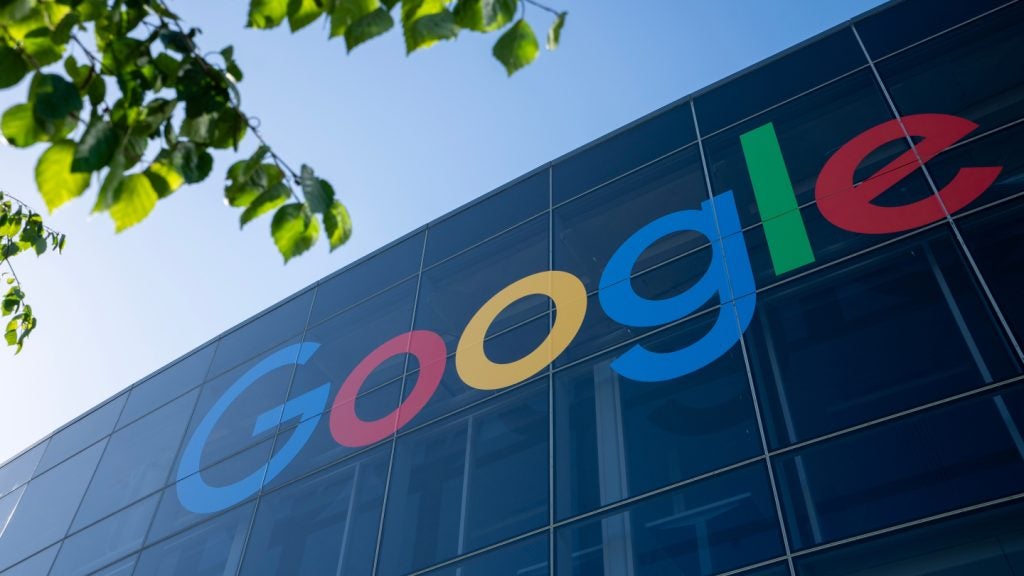
The medical devices industry continues to be a hotbed of innovation, with activity driven by increased need for homecare, preventative treatments, early diagnosis, reducing patient recovery times and improving outcomes, as well as a growing importance in technologies such as machine learning, augmented reality, 5G and digitalisation. In the last three years alone, there have been over 450,000 patents filed and granted in the medical devices industry, according to GlobalData’s report on Internet of Things in Medical Devices: Biometric identification sensors.
However, not all innovations are equal and nor do they follow a constant upward trend. Instead, their evolution takes the form of an S-shaped curve that reflects their typical lifecycle from early emergence to accelerating adoption, before finally stabilising and reaching maturity.
Identifying where a particular innovation is on this journey, especially those that are in the emerging and accelerating stages, is essential for understanding their current level of adoption and the likely future trajectory and impact they will have.
150+ innovations will shape the medical devices industry
According to GlobalData’s Technology Foresights, which plots the S-curve for the medical devices industry using innovation intensity models built on over 550,000 patents, there are 150+ innovation areas that will shape the future of the industry.
Within the emerging innovation stage, ingestible sensors, wireless gastric stimulation devices, and remote nerve stimulation devices are disruptive technologies that are in the early stages of application and should be tracked closely. Dosage monitoring inhalators, programmable infusion pumps, and athletic monitoring sensors are some of the accelerating innovation areas, where adoption has been steadily increasing. Among maturing innovation areas are blood glucose sensors and medical emergency response systems, which are now well established in the industry.
How well do you really know your competitors?
Access the most comprehensive Company Profiles on the market, powered by GlobalData. Save hours of research. Gain competitive edge.

Thank you!
Your download email will arrive shortly
Not ready to buy yet? Download a free sample
We are confident about the unique quality of our Company Profiles. However, we want you to make the most beneficial decision for your business, so we offer a free sample that you can download by submitting the below form
By GlobalDataInnovation S-curve for Internet of Things in the medical devices industry

Biometric identification sensors is a key innovation area in Internet of Things
Biometric identification sensors are used to identify an individual’s biological characteristics and convert them into electrical or biometric signals. These identification sensors normally work as semiconductor devices that analyze the images using biometric recognition algorithms to perform the task of identification and verification. These sensors are rapidly replacing the conventional PIN and password security methods, as they are fast, universal, convenient, and forgery-proof.
GlobalData’s analysis also uncovers the companies at the forefront of each innovation area and assesses the potential reach and impact of their patenting activity across different applications and geographies. According to GlobalData, there are 30+ companies, spanning technology vendors, established medical devices companies, and up-and-coming start-ups engaged in the development and application of biometric identification sensors.
Key players in biometric identification sensors – a disruptive innovation in the medical devices industry
‘Application diversity’ measures the number of different applications identified for each relevant patent and broadly splits companies into either ‘niche’ or ‘diversified’ innovators.
‘Geographic reach’ refers to the number of different countries each relevant patent is registered in and reflects the breadth of geographic application intended, ranging from ‘global’ to ‘local’.
Patent volumes related to biometric identification sensors
Source: GlobalData Patent Analytics
Samsung Group is one of the leading patent filers in Biometric identification sensors. Some other leading patent filers include Microsoft, Alphabet, Omron, Apple, and LG.
In terms of application diversity, Microsoft leads the pack, followed by Toyota Motor and Innominds Software. By means of geographic reach, Ford Motor held the top position, followed by Johnson & Johnson and Tesseract Health in second and third spots, respectively.
Biometric identification sensors are dependable because they use an automated technique to identify a person's identity based on their various distinctive features, such as voice, iris, face recognition, and fingerprints. Given that biometrics can neither be stolen, lost, or forgotten, they reduce the necessity of remembering passwords or PIN numbers otherwise. Biometric sensors are expected to have a promising future, as they are to be utilised for monitoring patients and their identification, with assured data safety.
To further understand the key themes and technologies disrupting the medical devices industry, access GlobalData’s latest thematic research report on Medical Devices.





